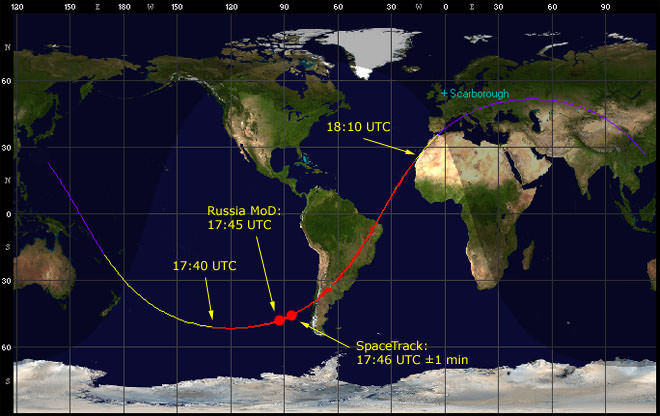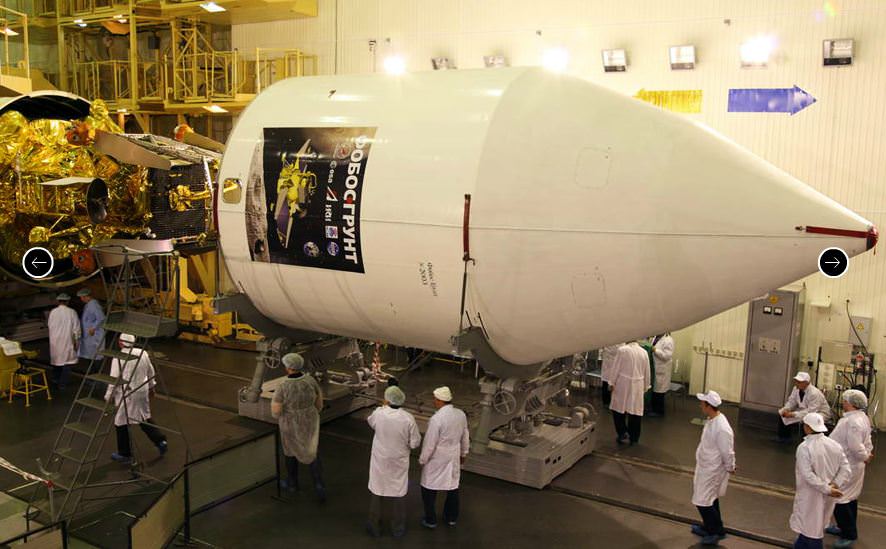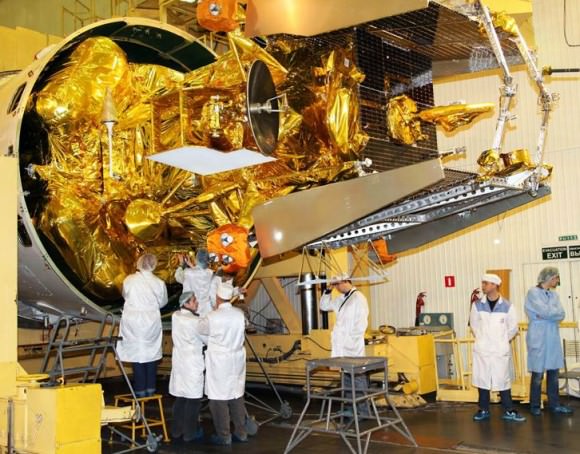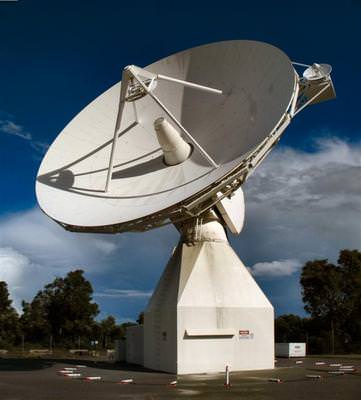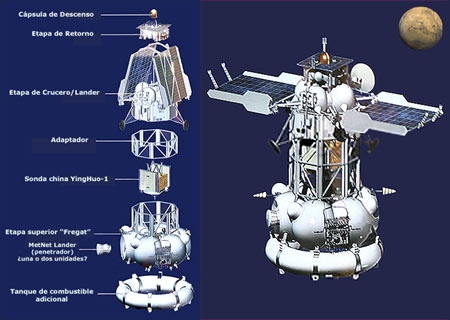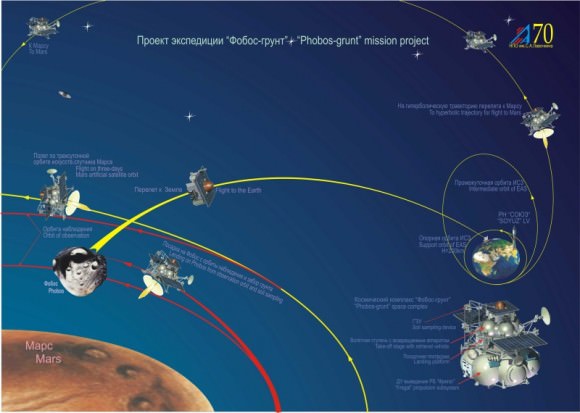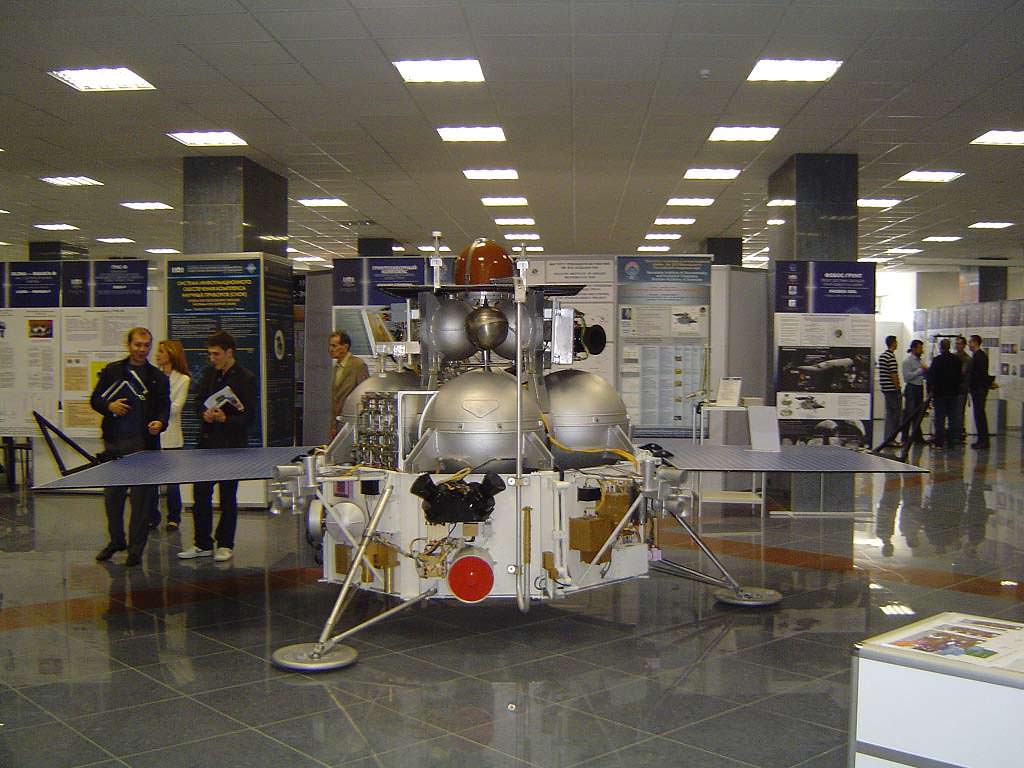[/caption]
A week and a half after the re-entry of Russia’s Phobos–Grunt probe, experts have now made an official statement on their determination of where the spacecraft entered Earth’s atmosphere. But their report offers no information regarding if any pieces of the craft made it to Earth and where any remaining debris might be. Consequently, recovery of any pieces, including the Phobos-LIFE biomodule is highly unlikely.
“While this was an uncontrolled reentry, the location of the potential impact area was largely over ocean, with a correspondingly low probability of any detrimental effects,” said Prof. Heiner Klinkrad, Head of ESA’s Space Debris Office in Darmstadt, Germany.
The Inter-Agency Space Debris Coordination Committee (IADC) reports that Phobos–Grunt re-entered on January 15, 2012 at 17:46 GMT, at an altitude of 80 km at 46°S and 87°W, near the South American coastline. About 7 minutes later, the report says, the spacecraft’s altitude was 10 km.
“Within the expected uncertainties, the prediction has been largely confirmed by observations,” ESA’s press release stated.
And that is all the information the IADC has provided, with no details on whether those observations were from observers on the ground or from satellite and radar facilities.
In fact, most of the initial information verifying that Phobos-Grunt was no longer in orbit came from ground observations of not seeing the spacecraft in orbit over Europe after 18:00 UTC on January 15 when it was supposed to have a visible pass.
IADC members include NASA, Roscosmos, the European Space Agency, European national agencies and the space agencies of Canada, China, India, Japan and Ukraine. The group primarily used orbit data from the U.S. Space Surveillance Network and the Russian Space Surveillance System to determine Phobos-Grunt’s path to destruction. Radar systems in Germany and France also provided orbit calculations.
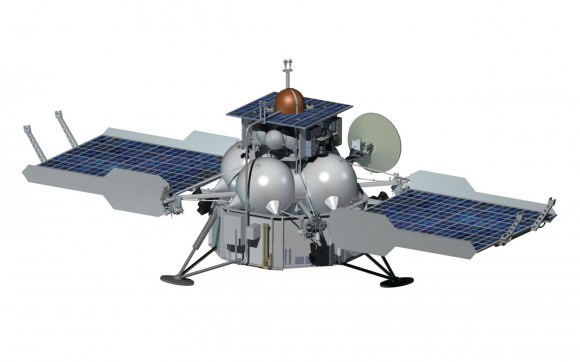
Before re-entry, predictions from the various agencies differed widely, and initially after the probe was said to have re-entered, there was confusion on when and where the re-entry took place. Roscosmos initially released a statement claiming that the probe had fallen safely in the Pacific, off the coast of Chile, but later there were reports that fragments of the spacecraft had fallen in the south Atlantic Ocean. Officials said the confusion was due to the large number of uncertainties in the spacecraft’s orbit and the space environment affecting the satellite.
Indeed, everyone involved in re-entry calculations acknowledges the problematic nature of trying to monitor things in real-time, such as atmospheric density in the specific location the object is traveling. Most of the time, the details can only be deduced after the time of re-entry, and any unknowns can alter the projected re-entry and impact point by wide margins.
And so it is not entirely surprising that the IADC cannot offer much information beyond the initial entry point and time for Phobos-Grunt.
Although much of the Phobos-Grunt spacecraft was expected to disintegrate upon re-entry, Roscosmos said perhaps 20 to 30 fragments weighing a combined 200 kg (440 lb.) might survive and fall somewhere over a vast strip of the Earth’s surface between 51.4 deg. north and south of the equator.
The cause of the spacecraft’s malfunction has not yet been determined, and Roscosmos has indicated that a full report on the failure will be published on January 26, 2012, although an interim report said to be available by January 20 did not appear. The investigation is being conducted by Yuri Koptev, former head of the Russian Space Agency.
Shortly after launching from the Baikonur Cosmodrome on Nov. 9, 2011, the probe became stuck in low Earth orbit after its upper stage engines repeatedly failed to ignite to send the ship on an unprecedented sample return mission to Mars’ moon Phobos. Later, ESA tracking stations were instrumental in establishing short-lived contact with the probe, leading to hopes the spacecraft could be saved. But subsequent contact was not able to be made, and without contact and inputs from the ground, the spacecraft’s orbit disintegrated.
However, the story of Phobos-Grunt’s malfunctions and demise has included some wild claims ranging from accidental radar interference to outright sabotage, along with intimations of conspiracy theories.
Several times after the malfunction, Russian space officials suggested that US radar emissions may have accidently disabled the spacecraft; at first from a station in Alaska, and then — after it was pointed out that Phobos-Grunt had never flown over that location — another Russian official said it was perhaps radar from a military installation on Kwajalein Atoll in the Marshall Islands.
But these claims were later dismissed by a Russian scientist, Alexander Zakharov from the Russian Academy of Science Space Research Institute, who was involved with the development of Phobos-Grunt. He told the Russian news agency Ria Novosti that the radar theory is “far-fetched,” and suggested instead that issues with the spacecraft itself were likely to blame.
“You can come up with a lot of exotic reasons,” Zakharov told RIA Novosti. “But first you need to look at the apparatus itself. There are problems there,” and he indicated there may have been some known problems with the second stage of the rocket.
Later, after re-entry, links to Phobos-Grunt tracking data on the Space Track website were removed, fueling speculation of a conspiracy to hide in formation of where the probe fell. Space Track is a public website that ordinarily details such events, and is operated by U.S. Strategic Command. The military also did not publish any confirmation of the probe’s fall, which is not the usual protocol.
But later, the US Strategic Command said a human error had accidentally misfiled the information (in the 2011 files instead of 2012). Shortly after the error was discovered, the information was re-posted to the site and is accessible at this time.
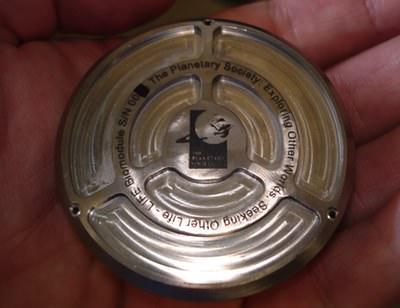
Meanwhile, hopes dim for finding the capsule for the Phobos-LIFE biomodule which included organisms in a small capsule to test the “transpermia” hypothesis –- the possibility that life can travel from planet to planet inside rocks blasted off one planetary surface by impact, to land on another planetary surface. The biomodule would have flown to Phobos and then returned to Earth with the sample return capsule of the Phobos-Grunt spacecraft.
“Because we can’t predict the details of the re-entry, we can’t predict whether the Phobos LIFE biomodule will survive, and certainly we can’t predict whether it will land somewhere it could be recovered,” said Bruce Betts from The Planetary Society, which sponsored the LIFE mission. “In the unlikely event the Phobos LIFE biomodule is recovered, we would want to study the organisms inside. Though not the long deep space experience we had hoped for, there still will be scientific value to study of the organisms even after just two months in low Earth orbit.”
Sources: ESA, ZaryaInfo.com, ieeeSpectrum/Jim Oberg, Ria Novosti. Special thanks to Robert Christy for the lead image, from his website Zarya.info

